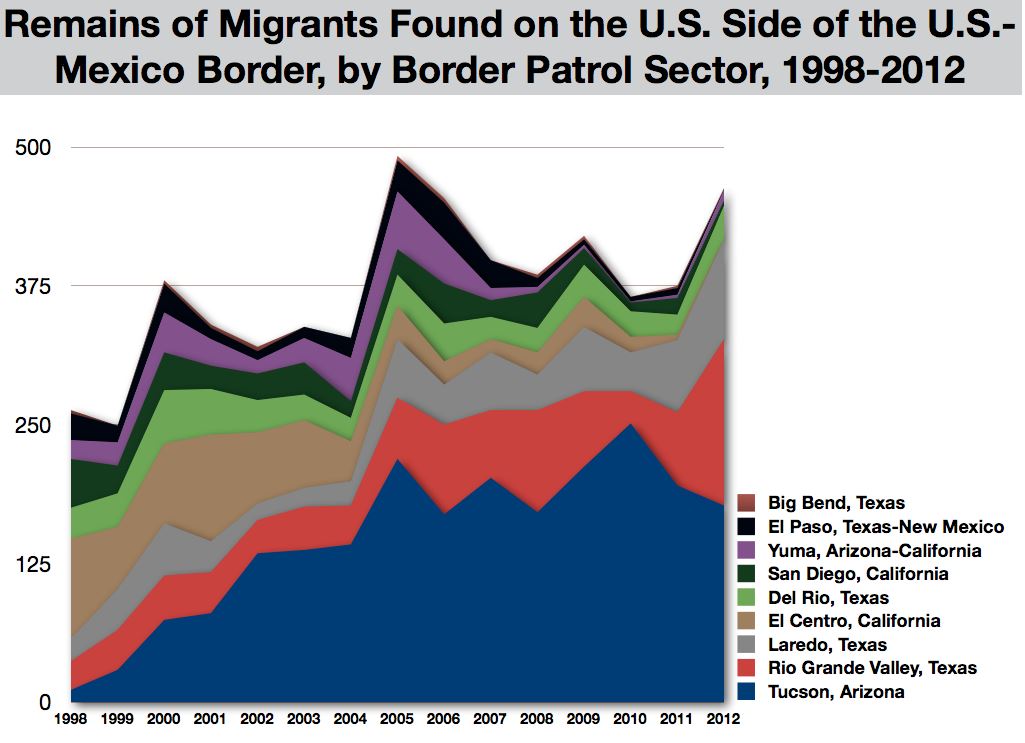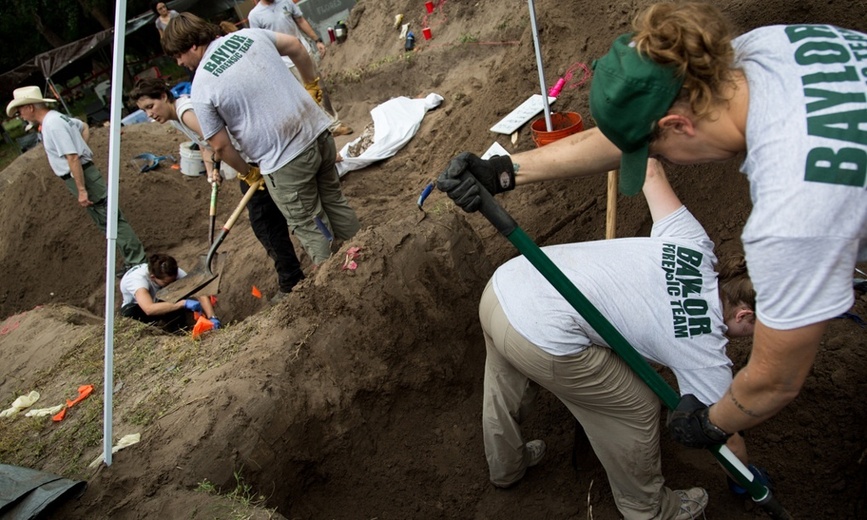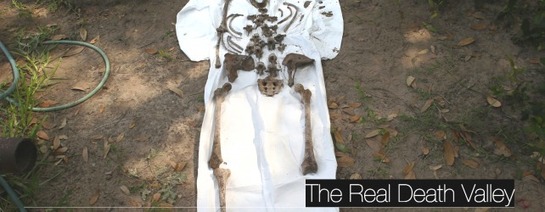
More migrants’ lives could be saved with a few inexpensive adjustments in water availability, rescue beacons, and search-and-rescue capability. A directive by the Department of Homeland Security for the Border Patrol to establish water drums, particularly alongside rescue beacons, would be an important step to avoid preventable deaths on U.S. soil. Increasing the number of rescue beacons, as well as providing additional funds to expand Border Patrol Search, Trauma, and Rescue Unit teams (BORSTAR), particularly in southwest border sectors with high numbers of migrant deaths, could also help to assist migrants in distress.
Many of the recovered remains of migrants, which now number in the thousands, are unidentified. Local officials in Brooks County, Texas, estimate that the costs of dealing with the unidentified dead, including mortician fees and autopsies, amount to hundreds of thousands of dollars each year. No unified procedure exists to process remains and DNA samples of bodies found in the border region. Many remains have not had their DNA sampled, and there has been no consolidated effort to match the DNA of unidentified remains with family members searching for missing loved ones.
Measures such as the following would greatly contribute to identifying these remains and provide answers to family members of missing migrants about the whereabouts of their loved ones:
- Providing federal funding to counties and tribal governments for the handling and DNA analysis of migrant remains;
- Creating a Missing Migrants program within the National Missing and Unidentified Persons System (NamUs); and
- Encouraging genetic laboratories receiving federal grant monies to process samples from unidentified remains and compare the resulting genetic profiles against samples from the relatives of missing migrants
Immigration reform legislation currently before the U.S. Senate (S. 744) includes billions of dollars in new funding for border security. It makes no mention, however, of steps to prevent needless deaths of migrants on U.S. soil, or to help cash-strapped counties identify the dead. The current bill offers an important legislative opportunity to stem the rise of this alarming human tragedy on the U.S. side of the border.
Click through to read more.
Source: www.wola.org
Texas recently sent 1000 National Guard to the border. That should prevent some deaths. But we need to prevent all the deaths.





